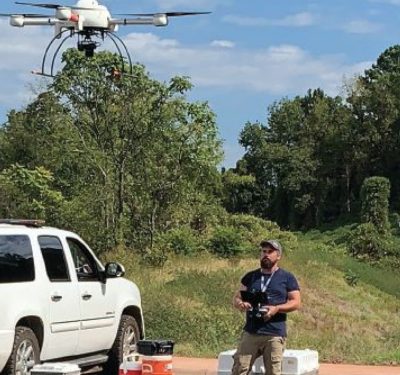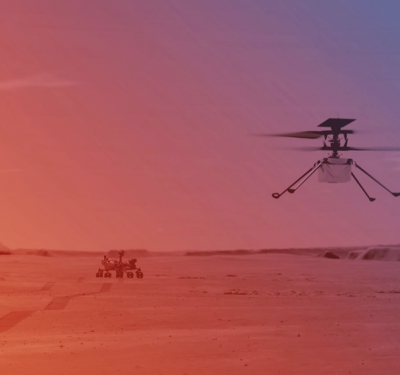
Lockheed Martin ranks among the world’s largest defense contractors, and is a major supplier to the Pentagon, NASA, the Department of Energy and many international markets. Simultaneously, the company also prides itself on innovation.
The U-2 blazed a high-altitude surveillance path; the F-22 Raptor and the F-35 Lightning II have defined fifth-generation fighters. Throughout the years, LM has won eight Collier Trophies for aeronautical achievement, most recently in 2018 for its Automatic Ground Collision Avoidance System (Auto GCAS).
Now, across the company and within its R&D Skunk Works®, unmanned and mixed human-machine systems also have come to the fore.
Lockheed’s UAS efforts date back to the 1964 flight of the D-21/Project Tagboard, developed for high-speed, high-altitude reconnaissance over hostile territory. Decades later, the semi-classified RQ-170 Sentinel provides battlefield stealth and reconnaissance. The hand-launched Stalker offers ISR capabilities to special forces, the covert Indago 3 backpack VTOL enables front-line recon. Going forward, advanced battlefield management is leading LM to coordinate multiple UAS at different levels of survivability, drive manned-unmanned teaming and expand use of artificial intelligence.
For the first of two looks at the company’s UAS/ISR accomplishments, Inside Unmanned Systems spoke with Steve Fortson, senior manager of sUAS within Lockheed Martin’s Rotary & Mission Systems business area and general manager of vehicle control station software developer LM Canada CDL Systems (Alberta). Drawing on his background as a career soldier with the Army and 23 years with Lockheed Martin, Fortson discussed the company’s ISR work, and its ultimate purpose—serving the end user.
(This interview has been condensed and edited for clarity.)
UAVS AND SYSTEMS
Currently, our primary market is our tactical end users, mostly defense, but we also sell quite a bit to security agencies—the Department of Homeland Security, U.S. Border Patrol is one of our largest customers. They use the Indago 3 quadcopter. It’s extremely quiet, it’s lightweight. It is very quick to assemble; there’s no tools required; it’s pulled apart and snapped together, ready to fly in a couple of minutes. We’ve got high fidelity imagers on there. It’s really preferred by a lot of users because it’s so quiet and expeditionary.
We’re moving into the field of tethered small UAS with the Indago 3. We are now optionally tethered: you can fly it freestanding or with a tether attached for persistent operations for several days. And we have two different variants in the tether: a static configuration—just the user on the ground—and a mobile platform configuration, which allows you to deploy an Indago 3 up to, say, 200 feet and it will follow the vehicle using a vision-based navigation capability in GPS-denied environments.
We’re also modular in terms of communications data links, because we’re finding that a lot of our end users have different preferences for the radios they’re using. So, we have integrated Silvus radios, Wave Relay® radios from Persistent Systems and a variety of TrellisWare radios. Less capable radios we have integrated in the past also provide some value to our buyers, just having that ability to be a little more agnostic.
Then move over to CDL Systems. They are still involved with the U.S. Army with the Gray Eagle and Shadow software, making periodic updates. We are also developing VCSi, our next-generation flagship [software], to be scalable controlled, meaning it could be operated from a laptop, a tablet all the way up to a large shelterized ground control station.
The army was heading toward scalable control for future unmanned air systems, so we’ve developed VCSI to support that. We’ve also developed the VCSi Touch, which is really made for the small seven-inch tablet and touchscreen, and future versions of our Indago all will have the VCSi Touch. We’re looking to get much greater capability into our ground control, leveraging all the development that CDL has done over the years.
We’re going to be releasing, later this year, a capability we call Northstar®, a GPS-denied navigation capability based on image-based navigation or SLAM—simultaneous localization and mapping. We are developing this initially for Indago, specifically, because you do have to have the vehicle-specific functionality. Later, we’re going to be developing this for the broader marketplace. Again, it’s developed out of Canada, so we’re looking to create something that does not have ITAR constraints [U.S. International Traffic in Arms Regulations controls the manufacture, sale, and distribution of defense and space-related articles and services.]
We’re developing a capability, we call it 3D RTM, or three dimensional real time modeling. A lot of our tactical users needed to map a space prior to entering the area. This software allows you to do it in real time, as opposed to taking video, coming back and then creating maps of that in post processing. We’re looking to getting those out to the market later this year.
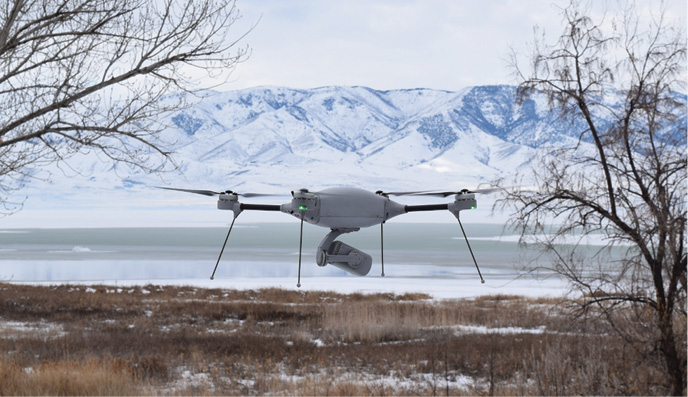
Lockheed Martin Procerus Technologies Indago 3 VTOL sUAS offers rapidly deployable ISR.
ADVANCED DEVELOPMENT
Moving over to the advanced development in Owego, New York, we are maintaining or continuing to manage the Desert Hawk III program with the United Kingdom Ministry of Defence. We are the incumbent here and we are maintaining the Desert Hawk III for at least another couple years until the UK MOD arrives at a replacement system.
We continuously assess emerging markets for alignment with and the potential to grow our business. We do this through a growing network of resellers with support from Lockheed Martin International. A key aspect has been our flexibility in adapting local or user-specific solutions.
In the recent past, we developed our Condor™ air vehicle with support of the Air Force Research Lab. This is hand-launchable, and can have one or two batteries, one or two payloads. We looked at what we call the mass fractions of the air vehicle. Generally, a small fixed-wing unmanned aircraft is about 25% power and propulsion, about 25% payload and about 50% airframe. What we were looking at is, how can we manipulate those fractions to give us greater capability in those areas as needed?
We did fully marinized tests where we landed in the ocean, pulled it out. We didn’t really even have to rinse it off; just take another battery and relaunch it. Everything, is fully waterproof. We also developed an all-weather air data system and we have tested this in up to four inches of rain per hour. Our users operate 24-7, whatever the weather may be. So we’re trying to accommodate that.
The other important part about the Condor is that it is based on open architecture. We even provide certain elements of the technical data to allow integration of third party components. We invite third party innovation and the extension of capability within these platforms.
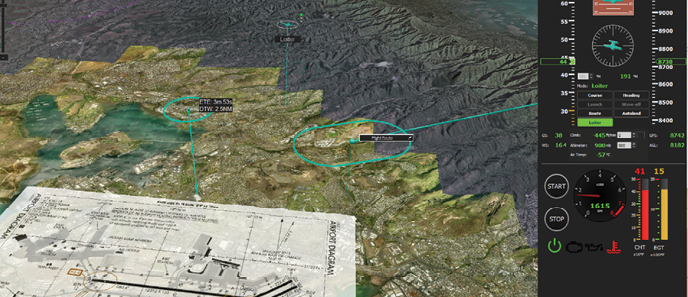
Produced by LM Canada CDL Systems, VCSi offers modular, extendable control, and is ITAR-compliant.
FUTURE-PROOFING
The Indago really is our sort of flagship product. We’re looking to increase processing power; there’s a huge boom in processing power with gaming-type processors. We’re going to be adding more payload capacity. The Indago is going to grow slightly in the future; we’re looking to enable multiple payloads on it. So if you have a need, let’s say, for cyber or electronic warfare or a comms relay capability as your primary mission set, then we have a secondary payload on the Indago that enables you to have, let’s say, an EO/IR camera.
We’re looking at sense and avoid. We’re also looking at other improvements recommended to us by our users, and there are a lot of users out there. One is the removal and replacement of the batteries. We’re re-looking so that we reduce the size of the batteries so they could be carried on board a commercial aircraft, under the Department of Transportation limits for that. And they’ll also be able to be removed and replaced on the unmanned aircraft without having to shut it down—hot swapping, as they call it.
And we’re looking at adding artificial intelligence. We’ve got big efforts within Lockheed Martin corporate under our data analytics office, where we’re doing advanced autonomy, and artificial intelligence and machine learning. Our small UAS are going to be one of the beneficiaries of that. This artificial intelligence will not just be for image-based detection identification. Some of the advanced autonomy we’re working on right now is collaborative navigation between units. So if you’re swarming to an area, and let’s say one of the pieces or groups of the swarm gets separated from the pack, we’re developing technology which will automatically detect that and then position the swarm such that others will be able to link to them so they maintain formation and the distributed operation in spite of the obstacles they meet.
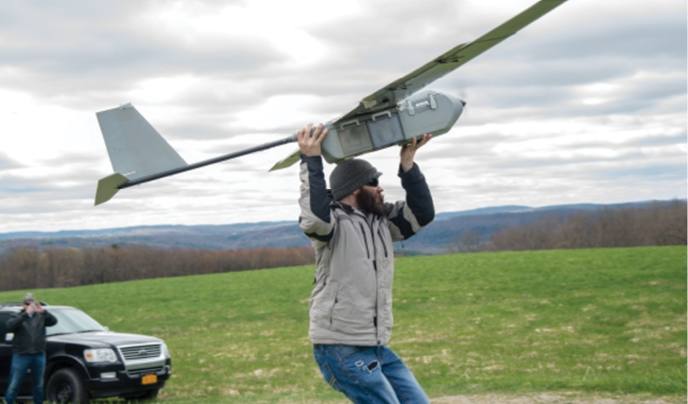
The hand-launched Condor offers all-weather extended endurance.
HONORING THE END USER
Even with all the upgrades, our focus, first and foremost, is the tactical end user. Everything we’re doing is with the soldier, sailor, marine, airman, the customs border agents that are out there doing surveillance. We have user groups that we’re getting direct feedback from and we are always looking for new capability, not just from within the halls of Lockheed Martin—which there’s much, of course—but also from all of the industry and working with academia. We always welcome that kind of innovation and technical competency and capability into our products and try to enable that as best we can.
COMPETITIVE ADVANTAGE
I think it really has to do with capabilities within the corporation as a whole. We’re not looking at just the airframe and powerplant. At Lockheed Martin, there’s the kinetics of the missiles and fire control, the data analytics of our corporate engineering technology office, the advanced autonomy we’re doing at various places within the corporation. What about manned-unmanned teaming? We’re looking at future vertical lift and next generation army capabilities and long-range precision, things of that nature.
Here, and of course in the Skunk Works, there’s always development to really solve the hard problems. We look at the endurance of a small unmanned air system, or the need for persistence, or the need to do high fidelity imaging in a less-than-desirable area. So we’ve got capabilities across the corporation that support in those areas.
Lockheed Martin today is really focused on operating as “one LM,” as we call it. That means really getting these capabilities from across the corporation and putting them into the products that we’re developing locally. And enabling that cross-collaboration between business areas, lines of business. We’re really seeing an uptick in that, and it’s really supporting where we are heading in the future. We’re looking at things such as where 5G comes in. And autonomy—developing goal-based planning to where you give it the mission and it figures it out.
INNOVATION AND INSPIRATION
First of all, I will tell you that the leadership here, I would characterize it as having a high degree of emotional intelligence. Most of Lockheed Martin works on a 4-10 work schedule now; we really become tightknit, almost like a family atmosphere within the team. We’re open to diversity and inclusion, and really pursue that as we’re doing our business. Within the UAV portfolio, we may be three different business entities but we operate as a single portfolio. If we have software questions, we go to our software experts. If we have needs for advanced development, integration and tests, we’ll go to our Owego team. And the team is really super-motivated to support the needs of the business. The lofty goals that we have.
We’re not building toys. These are capability sets. What inspires me is seeing capability ultimately get to the warfighter. And then when the warfighter comes back and says, “You guys, you won’t believe how well this has helped us.” We recently got feedback like that, from our Customs and Border Patrol customer in the use of Indago. To know that we are making our end users successful in their missions and giving them the service and support they need, that is what truly inspires me. It’s something that we’re all really proud of.


